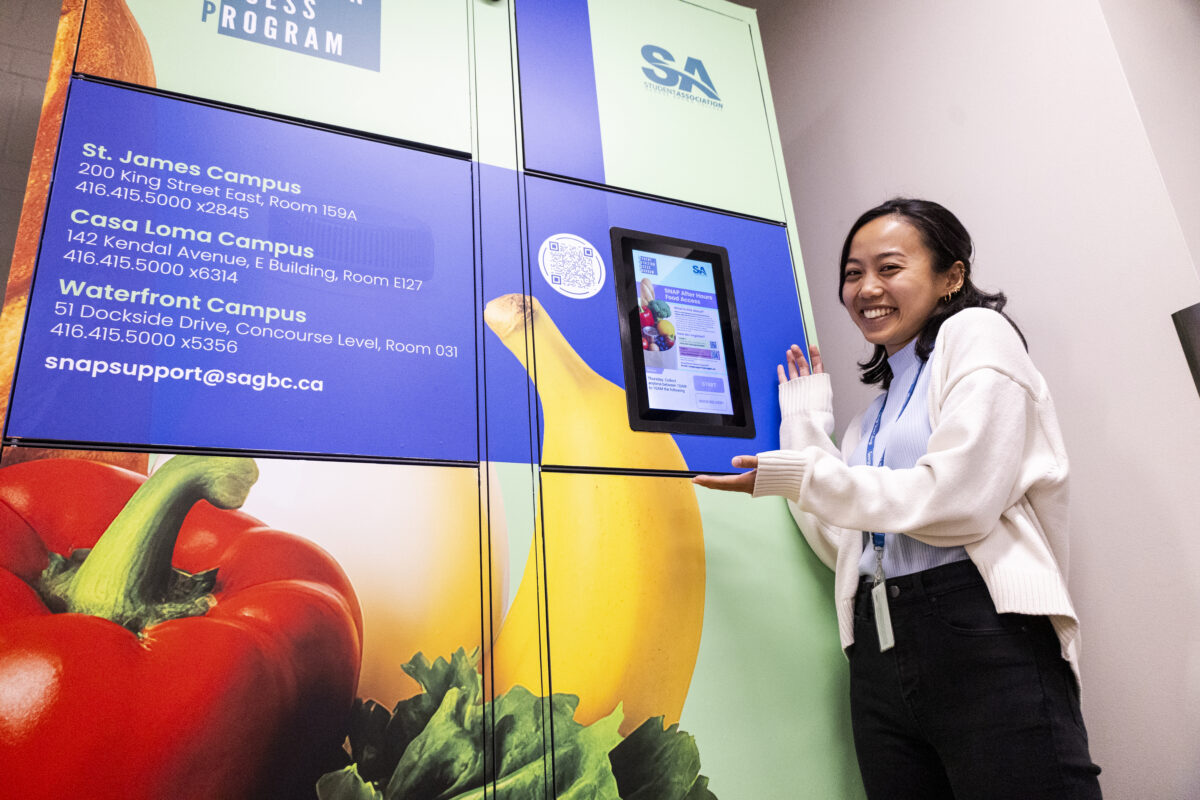Service looks to gain more attention to recently launched aspects.
The Student Association’s Nutrition Access Program (SNAP) returns for the upcoming academic year, with a mission to provide students with support through wellness and nutrition.
One of the most used Student Association (SA) services, SNAP offers various programs to students, highlighting how incorporating healthy nutrition can positively support student life. Whether through the food pantry, Nourish ‘n Go or Breakfast Table programs, or one of the many workshops offered throughout the year, there are numerous ways SNAP is able to support the wellbeing of students.
Continuing to expand their offerings to make things more convenient for students, the program launched the After Hours Food Access. This new addition to the service put refrigerated lockers at each of the three main campuses, allowing students to schedule hamper pickups for hours when the service is closed.
Inspired by community fridges found across the city, Ruka Watanabe, coordinator with SNAP, notes that they wanted to bring in something similar – but allowed for necessary changes to not leave the system open for anyone.
“[We] wanted to bring something similar here… And then our partners called BrandActive, they were very interested in the whole idea, making this vision come into reality. So, they’ve provided funding for this initiative. They were the ones who connected us with Bluebits, which is the refrigerated locker company,” said Watanabe.
To use the lockers, students must have followed the SNAP registration process found on www.studentassociation.ca/snap. Once a student is registered, they can book appointments to visit the Pantry or use the lockers to access pre-selected food at any time of day, ensuring they have access to nutrients whenever they need them.
Food left in the lockers must be picked up within a 24-hour window.
“The way it’s currently operates is that folks would book an appointment through our booking system, and then in the morning, the morning of our team will put the food items in the locker. It’s pre-selected based on Fox’s dietary restrictions so students won’t be able to pick their items, per se, and it’s only, like, refrigerated or like pantry, like shelf stable items. But yeah, and then from the time that the food gets put into the locker,” she added.
With the program just launching earlier this summer, the number of students accessing food via the lockers is lower than expected. Watanabe says that she sees anywhere between four to six students accessing the lockers each week across all campuses. She adds that with each locker allowing for seven compartments to be filled at once, she hopes to see numbers increase as time goes on.
In terms of the feedback so far, Watanabe says students at the Casa Loma campus are very appreciative of the lockers accessibility.
“The Casa Loma campus, there’s quite a number of like evening classes. So those students have really appreciated having being able to come by before their classes, or during their breaks, or even after their classes, to collect food. Otherwise, they will not be able to access SNAP’s support. So that’s been a major benefit of it.”
In addition to their regular duties to serve the students of George Brown College, SNAP has been working to ramp up their community garden initiative. Currently located in the green space at the Casa Loma campus, SNAP spends summers planting and growing fruits and veggies – 85 per cent of which Watanabe says gets given out to students in hampers and lockers.
While she hopes to continue growing the garden initiative, not only by expanding to all campuses but by keeping the garden running all year long, Watanabe knows there are hurdles to overcome. So far, the service has started hydroponic gardening, hoping things like this can help push the service to explore new ideas.
Many events and workshops also take place for students interested in learning more. Workshops include food loss prevention, financial well-being, and a harvesting session with the Spadina Museum.
For more information on SNAP visit www.studentassociation.ca/snap.


